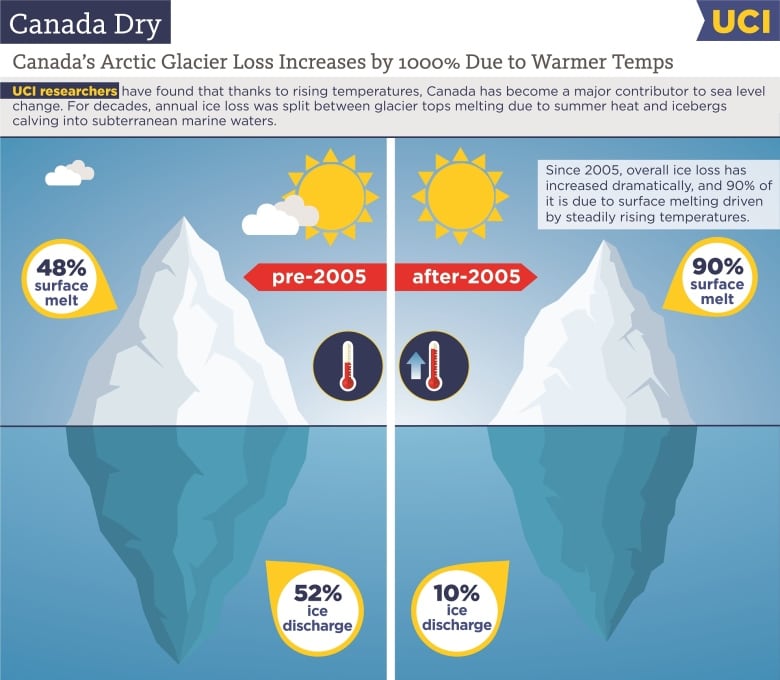Can a $500 billion geoengineering project save the Arctic from melting?
This has been a particularly hot year for the Arctic, with parts registering 20 degrees above normal. At this rate, forecasters say the Arctic could be ice-free by 2030.
An iceless Arctic could have a catastrophic impact on the world's climate — which has some climate scientists proposing radical ideas.
One promising suggestion is to refreeze the arctic ice.
Steve Desch is a professor of astrophysics at Arizona State University, and he's part of the team proposing the massive geoengineering project.
Desch tells The Current's Anna Maria Tremonti he thinks we can stop the rate of ice melt by positioning 10 million pumps with wind turbines around the ice. The wind power would draw water from below the sea ice and spill it over the frozen surface.
"The heat has to be released and conducted to the surface — that's where it's coldest."
"We calculated that this would increase the rate of freezing, possibly adding a metre to the thickness of the ice over one Arctic winter."
But saving the Arctic does not come cheap. Desch says the scale of the project has to be quite substantial to have an effect, bringing the cost to an estimated $500 billion over ten years.
It is a very large number, but not an impossible number... On the order of the Manhattan Project or Iraq war.- Steve Desch
Beyond cost, Ian Bruce, the director of science and policy at the David Suzuki Foundation, cautions against jumping head-first into the project .
"One of the real concerns that I have is around the unintended consequences ... making sure we're not swapping one problem for another," says Bruce.
"Taking vast amounts of seawater from the ocean and redistributing it to the surface will have an impact on plankton and other species. That could disrupt the food chain."

Yet, Desch says his proposal is less harmful than most.
"Of the various geoengineering technologies, this one has more benign effects because it's aim is simply to restore the ice to the level that it was two decades ago. And the means by which we do it is simply an amplification of a natural process: the freezing of seawater into sea ice."
But Bruce remains skeptical of geoengineering projects that seek to mitigate effects rather than address the core issue of carbon emissions.
If we're going to spend billions of dollars in solutions, we have to be very cautious we're not investing in solutions that just deal with the surface of the problem ... a Band-Aid solution.- Ian Bruce
Desch plans to develop a prototype of his team's technology and hopefully test it in the Canadian Arctic in the next few years, but he concedes the refreezing strategy can not quell the impacts of climate change on its own.
"It's important to remember that this doesn't solve everything. This simply helps the ice thicken the way it used to over the winter so that it has a better chance of surviving and not melting through the summer. This is something that helps the ice get back to where it was a few decades ago. But if the CO2 emissions do not get reduced, and if we continue to change the climate at an accelerated pace, then ultimately this won't work in the long run … This buy's time."
This segment was produced by The Current's Sujata Berry, Willow Smith, Kristin Nelson and Network Producer Michael O'Halloran.